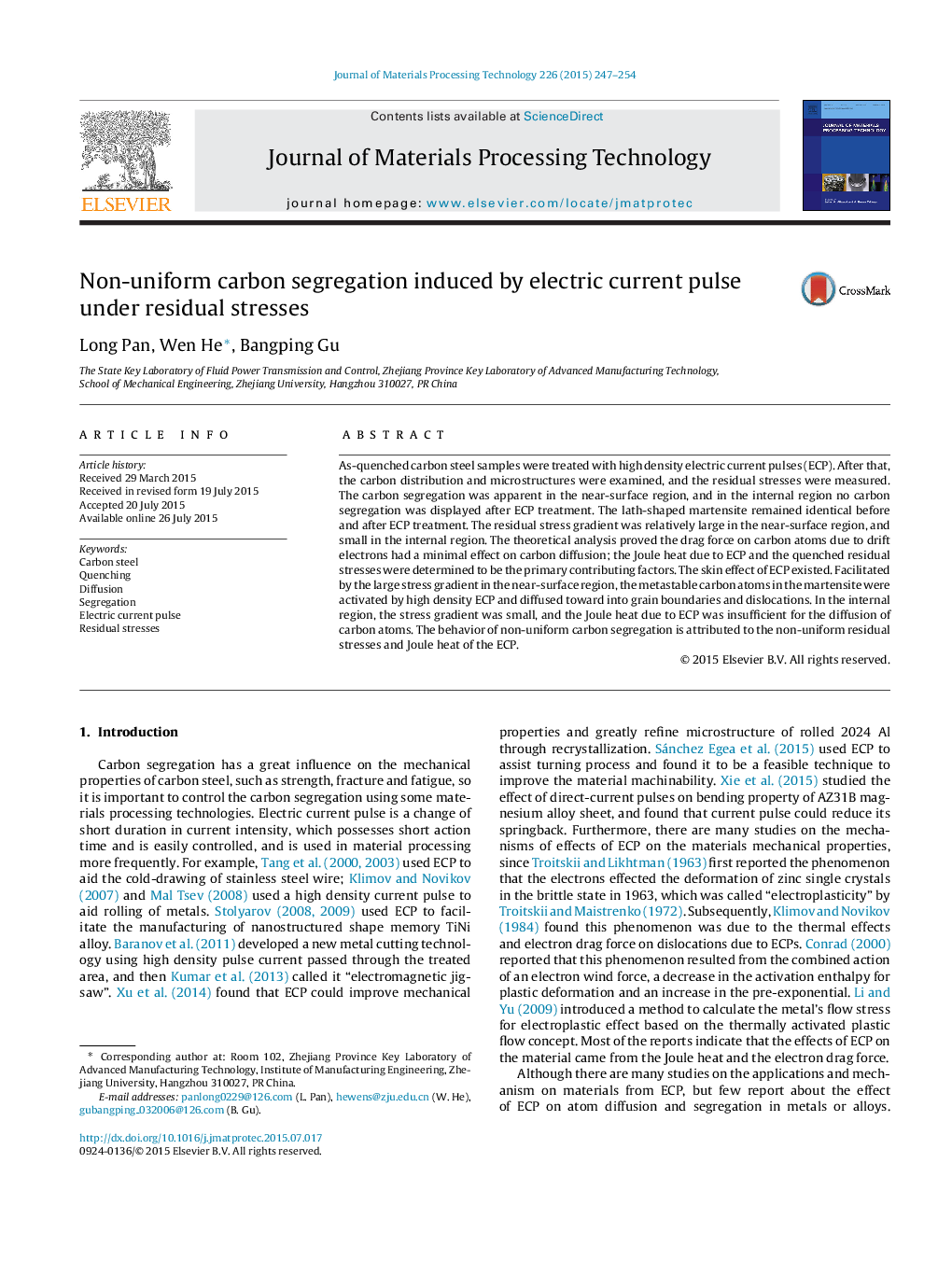| Article ID | Journal | Published Year | Pages | File Type |
|---|---|---|---|---|
| 794668 | Journal of Materials Processing Technology | 2015 | 8 Pages |
As-quenched carbon steel samples were treated with high density electric current pulses (ECP). After that, the carbon distribution and microstructures were examined, and the residual stresses were measured. The carbon segregation was apparent in the near-surface region, and in the internal region no carbon segregation was displayed after ECP treatment. The lath-shaped martensite remained identical before and after ECP treatment. The residual stress gradient was relatively large in the near-surface region, and small in the internal region. The theoretical analysis proved the drag force on carbon atoms due to drift electrons had a minimal effect on carbon diffusion; the Joule heat due to ECP and the quenched residual stresses were determined to be the primary contributing factors. The skin effect of ECP existed. Facilitated by the large stress gradient in the near-surface region, the metastable carbon atoms in the martensite were activated by high density ECP and diffused toward into grain boundaries and dislocations. In the internal region, the stress gradient was small, and the Joule heat due to ECP was insufficient for the diffusion of carbon atoms. The behavior of non-uniform carbon segregation is attributed to the non-uniform residual stresses and Joule heat of the ECP.
